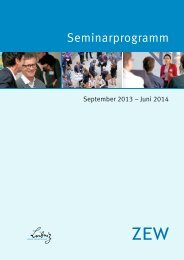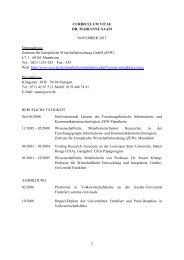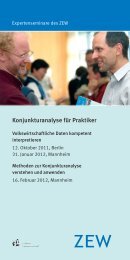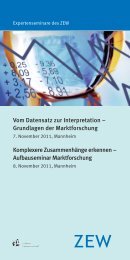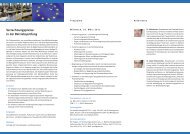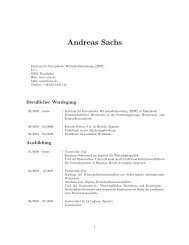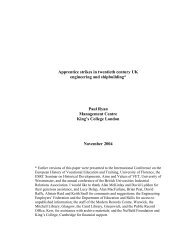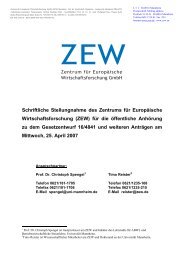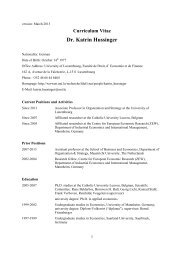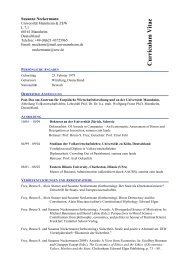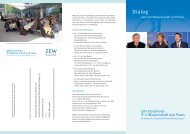Does Alma Mater matter? Evidence from Italy*
Does Alma Mater matter? Evidence from Italy*
Does Alma Mater matter? Evidence from Italy*
Create successful ePaper yourself
Turn your PDF publications into a flip-book with our unique Google optimized e-Paper software.
a (propensity score) matching estimator. As explained in their paper, such an<br />
approach: a) assumes that there is no selection on unobservables problem; b)<br />
‘…does not solve the support problem… (page 5)’; and c) solves the linear<br />
conditioning issue, since rather than assuming that the expected value of the<br />
outcome conditional on the observables is a linear function of the observables,<br />
makes a fully non-parametric comparison of mean outcomes between treated<br />
and non-treated individuals in the common support.<br />
In this paper we take a different estimating approach, which we illustrate<br />
by focussing on wages as the outcome of interest (we also study employment<br />
probabilities and we detail later our methodology in that case). Let<br />
wi=αw+ΣfΣcd cf iθ cf +xi’γw+ui (1)<br />
be the log-monthly wage for individual i (i=1…N), a linear function of the<br />
college-faculty cluster <strong>from</strong> which she graduated (d cf i) and observable<br />
attributes (xi). The vector of observables includes controls for gender, region of<br />
employment, labour market experience parental background in terms of<br />
occupation and education, the final graduation mark, the type of high school<br />
attended (whether generalist or technical/professional) and the marks reported<br />
in the high school graduation exam. Given the inclusion of detailed parental<br />
background, these latter variable are likely to proxy the impact of ability. Most<br />
importantly, we allow for interactions between parental education and<br />
occupations, on the one hand, and marks and school types, on the other.<br />
Therefore, we allow all regressors related to personal attributes to enter the<br />
model non-linearly, which might result in an attenuation of the risks of<br />
misspecifying functional form. As for the first problem discussed in Black and<br />
Smith (2003), we assume, as they do, selection on observables, and specify a<br />
rather extended list of observables. Finally, we can not identify effects on<br />
college faculty dummies for which there is no common support.<br />
Regression (1) serves as the first step in our procedure and allows us to<br />
predict log-monthly earnings by college/faculty clusters. In the second step,<br />
we take an approach a-là- Card and Krueger (1991) and analyse the<br />
5



